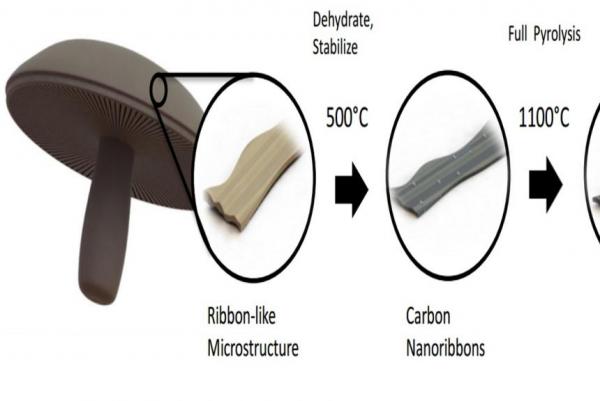-
Tips for becoming a good boxer - November 6, 2020
-
7 expert tips for making your hens night a memorable one - November 6, 2020
-
5 reasons to host your Christmas party on a cruise boat - November 6, 2020
-
What to do when you’re charged with a crime - November 6, 2020
-
Should you get one or multiple dogs? Here’s all you need to know - November 3, 2020
-
A Guide: How to Build Your Very Own Magic Mirror - February 14, 2019
-
Our Top Inspirational Baseball Stars - November 24, 2018
-
Five Tech Tools That Will Help You Turn Your Blog into a Business - November 24, 2018
-
How to Indulge on Vacation without Expanding Your Waist - November 9, 2018
-
5 Strategies for Businesses to Appeal to Today’s Increasingly Mobile-Crazed Customers - November 9, 2018
Researchers just made batteries from mushrooms… and they’re surprisingly good
Mushrooms which are environmentally friendly, cheap and easy to produce.
Advertisement
Engineers and material scientists at the University of California, Riverside used portabellas to create a new battery that better withstands the test of time.
Results indicate mushroom carbon anode technology could, with a few tweaking, replace graphite anodes.
The research also highlights how the salt concentration and potassium in the mushroom improves the potency of the cell becoming active increasing the accumulated capacity of the battery. Processes need to be optimized to expose the microchannels formed during pyrolysis, which would increase the measurable surface area.
Currently, rechargeable lithium-ion battery anodes generally use synthetic graphite, a costly material with harmful environmental side effects. This means that whereas lithium anodes lose capacity as they are used, mushroom anodes gain even more as utilization opens up more pores to facilitate energy storage and transfer.
The team involved, led by professors Cengiz Ozkan and Mihri Ozkan from UC Riverside’s Bourns College of Engineering, also developed a lithium-ion battery anode based on nanosilicon derived from beach sand a year ago.
The team found that taking skin from the cap of the portabella mushrooms and heating it to 500° C (932° F) saw it transform into a naturally derived carbon nanoribbon-like architecture.
“With battery materials like this, future cell phones may see an increase in run time after many uses, rather than a decrease, due to apparent activation of blind pores within the carbon architectures as the cell charges and discharges over time”, UCR graduate student Brennan Campbell, one of the authors of the study, told UCR Today.
The new findings could be important for the future creation of batteries. OK, maybe it makes a nice mushroom burger-if you’re into such things. This means that a cheaper and sustainable source to replace graphite is needed. But synthetic graphite is relatively expensive and has to be treated with hydrofluoric and sulphuric acids, which are harsh chemicals that produce a lot of hazardous waste.
In this case, the researchers looked at mushrooms.
Advertisement
Although the battery created by the UC Riverside scientists is still in early development stages-and is not yet as efficient as current batteries-the team has filed for patent protection for their invention, as set forth in Scientific Reports.




























